The History Of Japan (Part 1) - From The Jomon Era To Nara Period

This three part article covers the history of Japan from its earliest days to now, told through photos and links to relevant articles. This first article deals with the Paleolithic to the Nara era.
In this special three part article, I have outlined the major epochs of Japanese history, starting from its earliest historically accepted dates and leading right up to the modern day. To start things out right, I will be covering everything from the Paleolithic to the end of the Nara era in this first article, the second from the Heian to the Sengoku era, and the third will cover Modern Japan, from the Edo era onward.
Places in Japan where you can actually see the vestiges of each of these eras are also mentioned here, so, if there is one particular period in Japan's history that fascinates you, take up the next opportunity and visit those places.
If you’d like to learn more about Japanese history, you should really pay a visit to the Japan gallery at the National Museum of Nature and Science, or check out any of the amazing museums and galleries found in this article.
Jomon (12,000 BCE-800 BCE)
The Jomon period includes the earliest known human inhabitation of what would ultimately become Japan, spanning from the year 12,000 BCE to around the year 800 BCE. This time period was marked by the appearance of pottery that had cord patterns to it, which translates to Jomon in Japanese. For many scholars both in Japan and around the world, pottery was first produced in mainland Asia and then brought to Japan by other groups. But the materials used, and figures produced in Japan have their own distinct look.
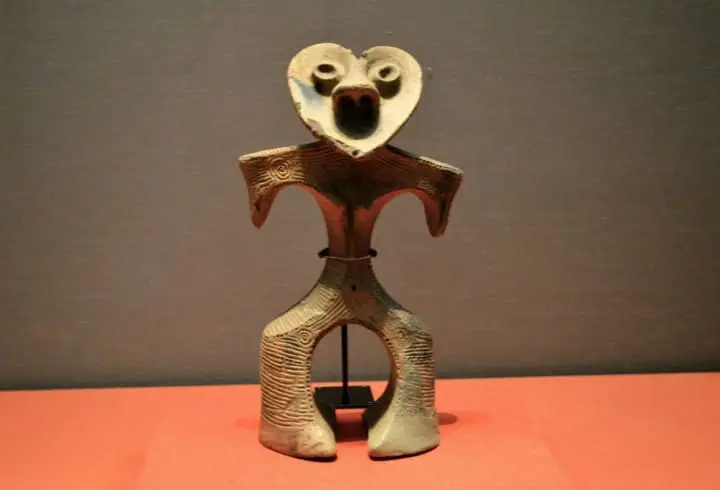
From: Ukiyo-e, Mandala And More: Tokyo National Museum
Take the heart-shaped dogu statues for example. Featuring uniquely shaped faces, the existent examples of dogu have been overwhelmingly female in form, and are thought to have been either fertility figures or objects used in prayers for abundant harvests.
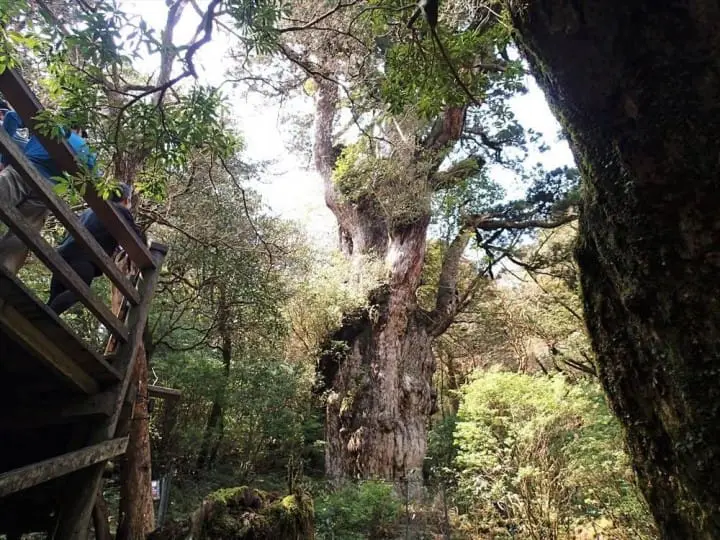
Photo from:Yakushima - Trekking To The Ancient Cedar Tree (Part 2)
If you would like to see a tree that has existed since the Jomon period, then a trip to the Kyushu region’s Yakushima to see the Jomon sugi, a 7200 year old cedar tree is a must.
Yayoi (300 BCE - 300 CE)
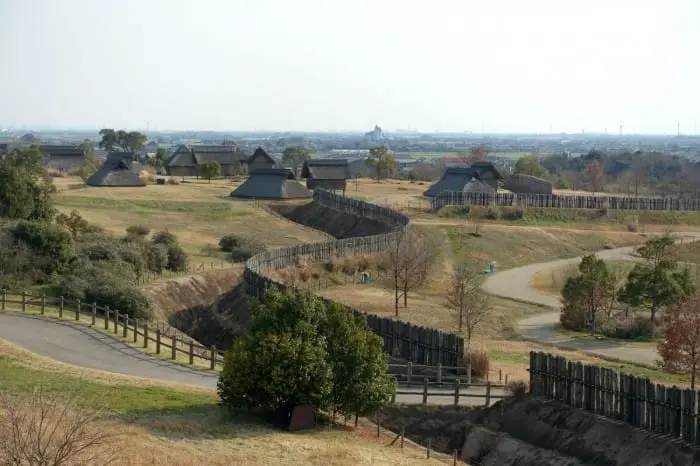
From: Travel to Ancient Japan - Yoshinogari Historical Park In Saga
The next major epoch in Japanese history is the Yayoi period, an Iron Age like time in Japan that dates from about 300 BCE to 300 CE. The very first examples of pottery from this era were discovered in Yayoi, in the Bunkyo ward of Tokyo, which gave its name to this era. According to other evidence found across Japan, the Yayoi period saw the start of hierarchical societies in Japan, and the use of bronze and iron metallurgy became commonplace.
One of the best ways to understand a culture that existed so far back in history from the modern age is to see it in person. While this might sound like an impossible feat, it is possible. The Yayoi period was when China first came in contact with the Japanese of the time, and they wrote about what they discovered of this civilization extensively. They took down details about the land of Wa, beginning in about 57 CE, and not only recorded their myths, but also the structures of their settlements, what they ate, how their society functioned as a whole, and much, much more.
This proved invaluable in the reconstruction of the ruins that were discovered in Saga prefecture at the Yoshinogari Historical Park, where visitors can see the Yayoi period come to life today.
Kofun (250 CE - 538 CE)
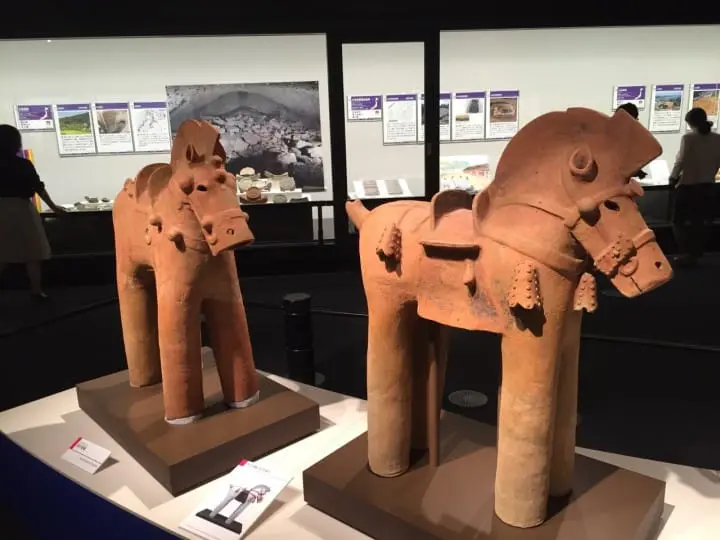
The Kofun period is an era in the history of Japan from around 250 CE to 538 CE that takes its name from the burial mounds discovered that date to this time - kofun meaning 'old tomb' in Japanese. This is the earliest recorded era of Japanese history, and is unique for the development of Shinto; haniwa, or clay offerings shaped like animals, daily implements and humans; and for the magatama, or curved jewels, which are stones carved in a comma-like shape, which can still be found in shops and jewelry stores today.

If you are in the Tokyo area and want to see a kofun for yourself, then head to the Saitama Kofun Park.
Asuka (538 CE - 710 CE)
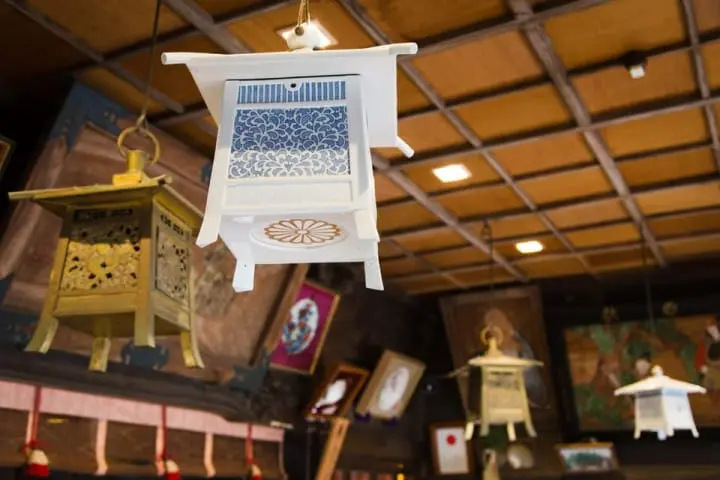
From: Arita: The Historic, Traditional And Futuristic Town Of Porcelain
The Asuka period, (538 CE - 710 CE), is known for its significant artistic, social, and political transformations that took place in the late Kofun period, but were mainly impacted by the arrival and influence of Buddhism and Chinese culture from East Asia. According to historical records, this is also the period wherein the name of the country changed from Wa to Nihon.
One of the major imports from China aside from Buddhism, was pottery, which quickly became a status symbol and began production in what is now Saga prefecture. Society became based on clans and was ruled overall by the Emperor of Japan whose capital was in Yamato province, now known as Nara. This was also the period wherein the Fujiwara family, who would have great influence over Japanese politics for the next few centuries came about.
There is also a famous kofun from the Asuka period in Nara, the Ishibutai Kofun which is located within the Asuka Historical National Government Park in Asuka village. It is believed that it is the tomb of Soga no Umako, a politician and influential leader in regards to Buddhism and its spread in Japan. Read more about it on our article on sightseeing in Nara.
Nara (710 CE - 794 CE)
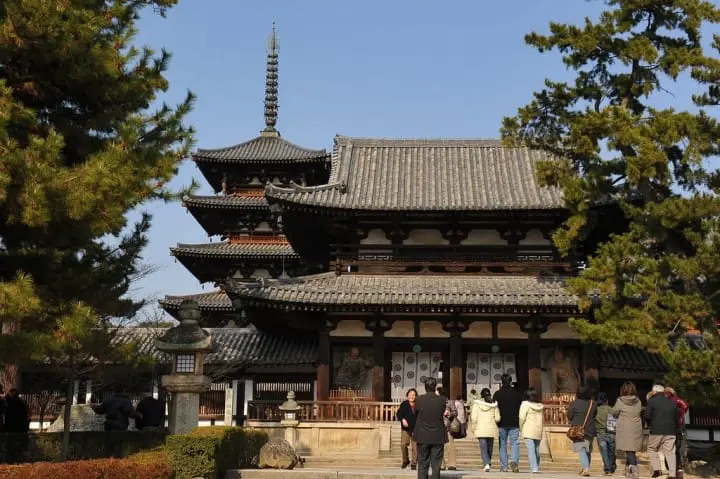
From: Sightseeing In And Around Nara, The UNESCO World Heritage City
The Nara era lasted from about 710 to 794 CE, and marks the period where the capital of Nihon moved to Heijo-kyo (Nara city), which was modeled after the capital city of Tang China. The influence of Chinese culture can be seen in the use of Chinese fashions, adopting the use of Chinese writing systems, the spread and influence of Buddhism, and in many other regards.
The two earliest records of Japanese history, the Nihon Shoki and the Kojiki, were made at this time, and thanks to the development and spread of writing, Japanese literature, especially poetry, really took off. It was a time of rapid social, cultural and industrial expansion.
If you'd like to learn more about sightseeing in Nara, take a look at Nara Travel Guide - Get To Know Japan's Ancient Capital.
Up Next
In the next article, we will be moving on to the Heian era (794 - 1185), a time known for its great contributions to the Japanese arts, through to the Sengoku period, when daimyo and other great military leaders ruled the country.
By the Same Author
Japanese Religion - Terms To Know When Visiting A Shinto Shrine
Learn The Impossible! Untranslatable Japanese Phrases
Japan Rail Pass Or Discount One-Day Tickets? Why You Should Use Both
Missed Your Last Train? How To Spend The Night Safely In The City
Delicious And Satisfying: 7 Must Try Comfort Foods In Japan!
Writer, translator, designer, weirdo.
































![[2025 Latest] A complete guide to enjoying a hidden gem in Japan: Tokyo and Kozushima in 4 nights and 5 days](https://resources.matcha-jp.com/resize/720x2000/2024/09/28-199498.webp)

![[30 minutes by train from Meitetsu Nagoya Station] A must-see for couples! Recommended date Feature Articles in Tokoname](https://resources.matcha-jp.com/resize/720x2000/2025/12/19-253428.webp)

![Deep dive into Japanese brands! A tour of famous leather shoe stores with GENSEI & Nin [Eizo Edition]](https://resources.matcha-jp.com/resize/720x2000/2025/12/18-253299.webp)